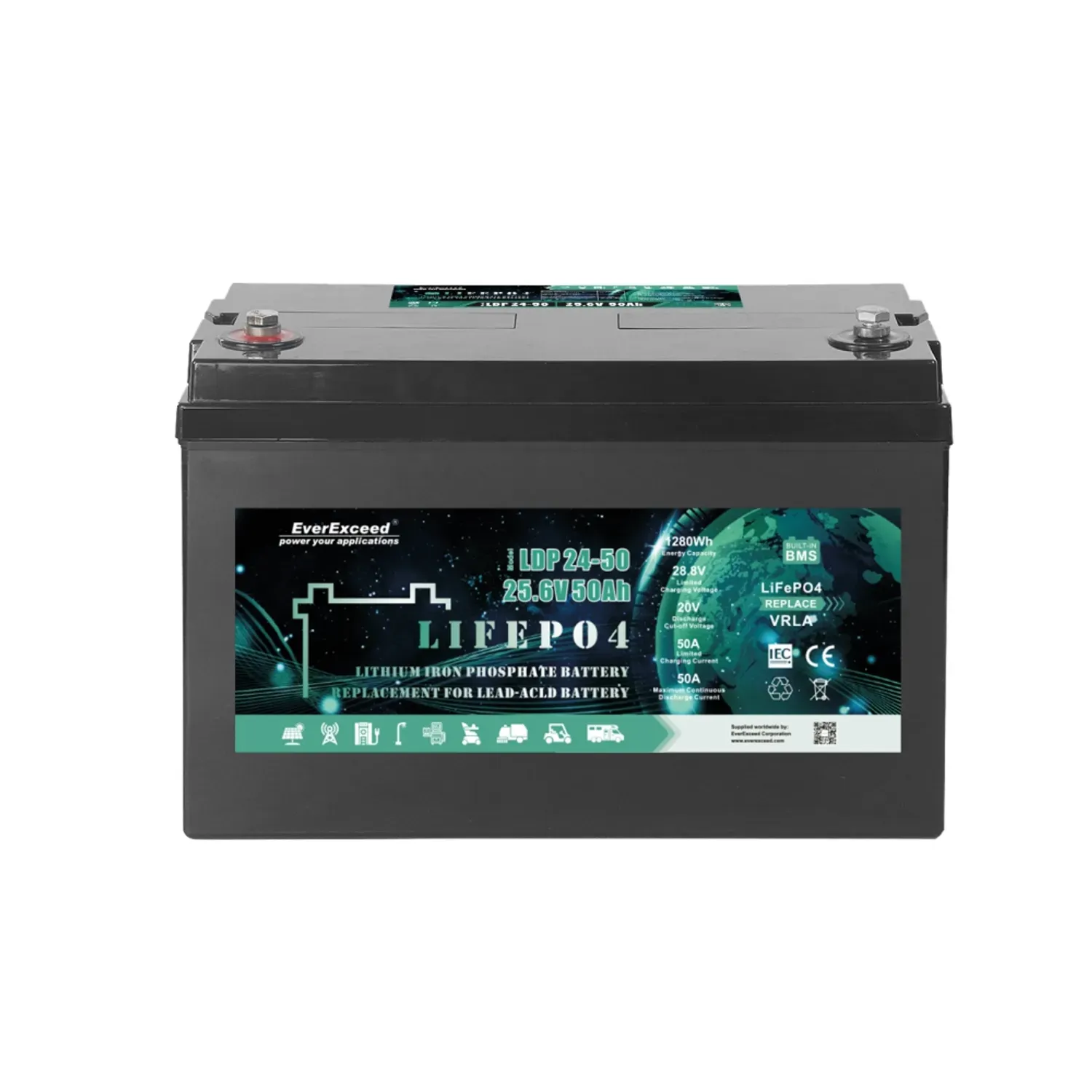
Get a Quote
How Many Cycles Can a LiFePO4 Battery Last?
When choosing a battery for energy storage solutions, one of the most critical factors to consider is its lifespan. Specifically, for LiFePO4 (Lithium Iron Phosphate) batteries, understanding how many cycles they can last is vital for making an informed decision. In this comprehensive blog post, we’ll delve into the life cycle of LiFePO4 batteries, exploring the factors that affect their longevity, comparing them to other battery types, and offering practical tips to maximize their lifespan.
Understanding Battery Cycles
What Is a Battery Cycle?
A battery cycle refers to the process of charging a battery from 0% to 100% and then discharging it back to 0%. Each complete charge and discharge cycle counts as one cycle. The number of cycles a battery can endure before its capacity significantly diminishes is a key indicator of its durability and overall value.
How Many Cycles Can a LiFePO4 Battery Last?
LiFePO4 batteries are renowned for their long cycle life. Typically, a well-maintained LiFePO4 battery can last anywhere from 2,000 to 5,000 cycles. In some cases, premium LiFePO4 batteries can even reach up to 7,000 cycles. This impressive lifespan makes them a preferred choice for many applications, including renewable energy storage, electric vehicles, and backup power systems.
Factors Influencing LiFePO4 Battery Life Cycle
Depth of Discharge (DoD)
One of the most significant factors affecting the number of cycles a LiFePO4 battery can last is the Depth of Discharge (DoD). DoD refers to how much of the battery's capacity is used during each cycle. For example, a DoD of 80% means that 80% of the battery's capacity is used before recharging. Generally, the lower the DoD, the more cycles the battery will last. LiFePO4 batteries can endure deeper discharges better than many other types, but minimizing DoD can still enhance their longevity.
Charging and Discharging Rates
The rates at which a LiFePO4 battery is charged and discharged also play a crucial role in determining its lifespan. Rapid charging or discharging can generate heat and stress the battery, potentially reducing the number of cycles it can endure. For optimal performance, it's recommended to adhere to the manufacturer’s guidelines regarding charging and discharging rates.
Temperature
Temperature has a significant impact on battery life. Extreme temperatures, whether hot or cold, can adversely affect the lifespan of LiFePO4 batteries. Maintaining a moderate temperature environment helps ensure the battery performs optimally and achieves its maximum cycle life. Most LiFePO4 batteries are designed to operate best within a temperature range of 20°C to 25°C (68°F to 77°F).
Quality of Battery Management System (BMS)
A high-quality Battery Management System (BMS) is essential for protecting LiFePO4 batteries and ensuring they last as many cycles as possible. The BMS monitors and manages critical parameters such as voltage, current, and temperature, preventing conditions that could harm the battery. Investing in a robust BMS can significantly extend the battery's cycle life.
Comparing LiFePO4 Batteries to Other Battery Types
LiFePO4 vs. Lead-Acid Batteries
Lead-acid batteries, commonly used in various applications, generally have a much shorter cycle life compared to LiFePO4 batteries. Lead-acid batteries typically last between 300 to 500 cycles, while LiFePO4 batteries can last 2,000 to 5,000 cycles or more. This difference makes LiFePO4 batteries a more cost-effective option over the long term, despite their higher upfront cost.
LiFePO4 vs. Lithium-Ion Batteries
While both LiFePO4 and other lithium-ion batteries offer advantages over traditional lead-acid batteries, LiFePO4 batteries typically have a longer cycle life. Standard lithium-ion batteries, such as those using Nickel Manganese Cobalt (NMC) chemistry, usually last between 500 to 1,000 cycles. In contrast, LiFePO4 batteries can last up to 5,000 cycles, making them a more durable and reliable option for applications requiring frequent cycling.
Practical Tips to Maximize the Cycle Life of LiFePO4 Batteries
Regular Maintenance
Regular maintenance and proper care can significantly enhance the lifespan of LiFePO4 batteries. This includes periodic checks of the battery terminals, ensuring connections are clean and secure, and monitoring the health of the BMS.
Optimal Charging Practices
Adhering to recommended charging practices is essential. Avoid overcharging or deep discharging the battery unnecessarily. Using a charger specifically designed for LiFePO4 batteries can ensure the charging process is safe and efficient.
Temperature Control
As mentioned earlier, temperature control is crucial. Ensure the battery is used and stored in environments with moderate temperatures. If the battery is used in extreme conditions, consider using thermal management solutions to maintain an optimal temperature range.
Avoiding Overuse
While LiFePO4 batteries are robust and can handle frequent cycling, avoiding excessive use when not necessary can help prolong their lifespan. For instance, in a backup power system, regularly testing the battery is essential, but continuous cycling for non-critical applications might reduce its overall cycle life.
Comparing LiFePO4 Batteries to Other Battery Types
LiFePO4 vs. Lead-Acid Batteries
Lead-acid batteries, commonly used in various applications, generally have a much shorter cycle life compared to LiFePO4 batteries. Lead-acid batteries typically last between 300 to 500 cycles, while LiFePO4 batteries can last 2,000 to 5,000 cycles or more. This difference makes LiFePO4 batteries a more cost-effective option over the long term, despite their higher upfront cost.
LiFePO4 vs. Lithium-Ion Batteries
While both LiFePO4 and other lithium-ion batteries offer advantages over traditional lead-acid batteries, LiFePO4 batteries typically have a longer cycle life. Standard lithium-ion batteries, such as those using Nickel Manganese Cobalt (NMC) chemistry, usually last between 500 to 1,000 cycles. In contrast, LiFePO4 batteries can last up to 5,000 cycles, making them a more durable and reliable option for applications requiring frequent cycling.
Practical Tips to Maximize the Cycle Life of LiFePO4 Batteries
Regular Maintenance
Regular maintenance and proper care can significantly enhance the lifespan of LiFePO4 batteries. This includes periodic checks of the battery terminals, ensuring connections are clean and secure, and monitoring the health of the BMS.
Optimal Charging Practices
Adhering to recommended charging practices is essential. Avoid overcharging or deep discharging the battery unnecessarily. Using a charger specifically designed for LiFePO4 batteries can ensure the charging process is safe and efficient.
Temperature Control
As mentioned earlier, temperature control is crucial. Ensure the battery is used and stored in environments with moderate temperatures. If the battery is used in extreme conditions, consider using thermal management solutions to maintain an optimal temperature range.
Avoiding Overuse
While LiFePO4 batteries are robust and can handle frequent cycling, avoiding excessive use when not necessary can help prolong their lifespan. For instance, in a backup power system, regularly testing the battery is essential, but continuous cycling for non-critical applications might reduce its overall cycle life.
Conclusion
In conclusion, the question "How many cycles can a LiFePO4 battery last?" has a promising answer. With proper care and optimal conditions, LiFePO4 batteries can last between 2,000 to 5,000 cycles, and in some cases, even up to 7,000 cycles. This longevity, combined with their safety, efficiency, and environmental benefits, makes LiFePO4 batteries an excellent choice for various applications, from renewable energy storage to electric vehicles.
Understanding the factors that affect the cycle life of LiFePO4 batteries, such as Depth of Discharge, charging and discharging rates, temperature, and the quality of the Battery Management System, is crucial for maximizing their lifespan. By following best practices in battery maintenance and usage, you can ensure that your LiFePO4 batteries provide reliable and long-lasting performance.
For those looking to invest in high-quality LiFePO4 batteries for replacing lead acid batteries, EverExceed offers a range of energy storage solutions designed to meet diverse needs. EverExceed’s LiFePO4 batteries are engineered for longevity, efficiency, and safety, ensuring you get the best performance and value from your investment. Whether you're powering a solar energy system, an electric vehicle, or a backup power setup, EverExceed provides reliable and advanced battery solutions tailored to enhance your energy storage experience. Invest in EverExceed for cutting-edge technology and unparalleled battery life.


